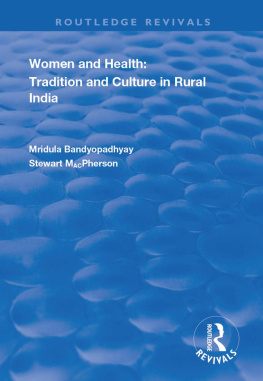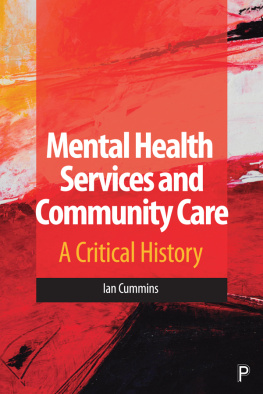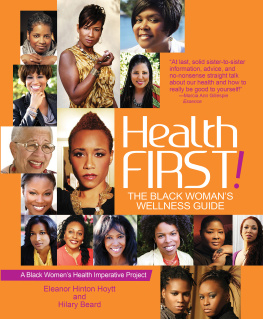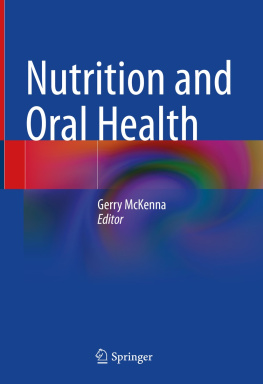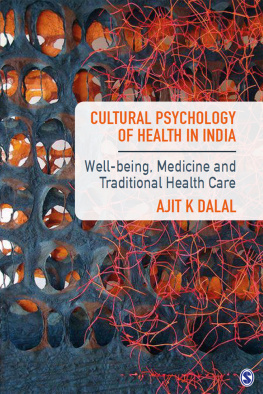WOMEN AND HEALTH: TRADITION AND CULTURE IN RURAL INDIA
Women and Health: Tradition and Culture in Rural India
MRIDULA BANDYOPADHYAY
Hong Kong University of Science and Technology
STEWART MACPHERSON
City University of Hong Kong
First published 1998 by Ashgate Publishing
Reissued 2018 by Routledge
2 Park Square, Milton Park, Abingdon, Oxon, OX14 4RN
52 Vanderbilt Avenue, New York, NY 10017
Routledge is an imprint of the Taylor & Francis Group, an informa business
Copyright Mridula Bandyopadhyay and Stewart MacPherson 1998
All rights reserved. No part of this book may be reprinted or reproduced or utilised in any form or by any electronic, mechanical, or other means, now known or hereafter invented, including photocopying and recording, or in any information storage or retrieval system, without permission in writing from the publishers.
Notice:
Product or corporate names may be trademarks or registered trademarks, and are used only for identification and explanation without intent to infringe.
Publishers Note
The publisher has gone to great lengths to ensure the quality of this reprint but points out that some imperfections in the original copies may be apparent.
Disclaimer
The publisher has made every effort to trace copyright holders and welcomes correspondence from those they have been unable to contact.
A Library of Congress record exists under LC control number:
ISBN 13: 978-1-138-35878-2 (hbk)
ISBN 13: 978-1-138-35882-9 (pbk)
ISBN 13: 978-0-429-43412-9 (ebk)
Contents
The present study explores the health situation of 402 ever married women in four districts of West Bengal state, India, and is based on empirical data. A survey was conducted in late 1993 and early 1994 to collect data on maternal and child health in rural India. The main focus of the study is on socio-economic and cultural factors influencing maternal and child health care practices, health care behaviour, reproductive health, family planning, perception about illness and disease, and utilisation of health care resources.
The main findings suggest that with increasing socio-economic status of the family, and development of the village, health care behaviour of the people changes drastically. More women accept family planning and small family norm, irrespective of religious beliefs or caste, and are more likely to utilise the available health care resources. However, the study reveals that irrespective of socio-economic status, religion or development, age at marriage remains very low, suggesting the influence of cultural pressures to marry early and to have children immediately. Son preference is found to be very strong. Postnatal care is found to be minimal because of lack of awareness and knowledge regarding postnatal services and its benefits and also because of the belief that it is not essential and necessary.
Medical pluralism is prevalent; more than one medical system is used simultaneously, depending on the perceived severity of illness. Treatment is sought from any or all of the available medical facilities (traditional, homeopathy, ayurvedic, or allopathic). A further finding indicates consumer oriented health care behaviour for perceived major ailments and welfare oriented behaviour for perceived minor ailments. Depending on the perceived severity of illness the study population oscillate between either consumer oriented or welfare oriented health care behaviour and utilisation.
Since the study was conceptualised with exploratory, descriptive methodology and framework in mind, advanced levels of quantitative analysis were not thought to be an appropriate tool to explore the social and cultural aspects influencing maternal and child health. Given the characteristics of the data, the study describes in detail with the help of frequency tables the relationship and association between different variables. However, tests of significance were performed to see the relationship between various socio-economic variables and health care behaviour and utilisation. The tests have not been included in this book, if anyone is interested to know more about the tests and results, please contact the authors for more information.
Finally, I would like to thank my friends and colleagues in India; Prof. U. P. Sinha, Prof. Tara Kanitkar, Prof. T. K. Roy, Mr. Deshpande, Dr. B. M. Ramesh, and Dr. A. G. Khan from the International Institute of Population Sciences (IIPS), Bombay, India, who helped and supported me immensely during the course of my field work, and data analysis. Prof. Paul Wilding and Prof. Veronica Pearson contributed substantially to this study with their creative suggestions and criticisms. I would also like to thank my colleagues and friends in the Department of Public and Social Administration, City University of Hong Kong. Lastly, I would like to thank Dr. Joe Thomas, my partner, for all his support and help and surviving my flare-ups and encouraging me through out the entire process of writing this book.
Mridula Bandyopadhyay
ANM | Auxiliary Nurse Midwife |
AWW | Anganwadi Workers |
BEE | Block Extension Educator |
BPHC | Block Primary Health Centre |
CHC | Community Health Centre |
CSSM | Child Survival and Safe Motherhood |
DMO | District Medical Officer |
IAS | Indian Administrative Service |
ICDS | Integrated Child Development Services |
LHV | Lady Health Visitor |
MCH | Maternal and Child Health |
NHP | National Health Policy |
PHC | Primary Health Centre |
PHN | Public Health Nurse |
TBA | Traditional Birth Attendant |
UN | United Nations |
VHG | Village Health Guide/Volunteer Health Guide |
WHO | World Health Organisation |
Despite the rising living standards and modern health care in the developing countries, a wide gulf exists between the have and the have-nots. The poor and rural women, urban slum dwellers, squatters, and indigenous population are primarily at the receiving end of the inequitable growth in most of the developing countries of the world. India is no exception to this kind of existential and urban oriented development. Because of marginal development, often the poor and the women are the most affected. The health status of a population is a reflection of the socio-economic development of a country and is also an indicator of social well-being. It is important to have a healthy population for progress and development. In the words of Subedi,
The health of a population is an important element in its ability to progress and develop. If health is to be improved in a population - particularly in developing countries - health services must be capable of delivering effective health care and members of the population must use these services (Subedi, 1989, p. 412).

